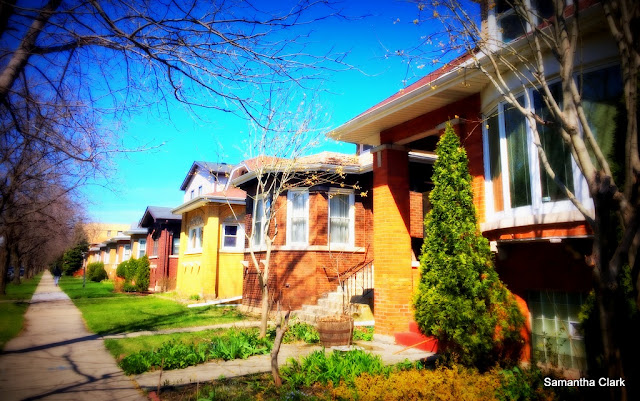In early April my husband, daughter and I decided to try a
new food. My husband had been suggesting Middle Eastern for a while, although
we never seemed to get around to eating it, despite a couple of decent
restaurants near our home. After an online search we agreed to try something
foreign to us—Shawarma cooking. We found some good restaurant reviews in West
Ridge.
From downtown we took the brown line L train to the Western
stop, then hopped a bus north. We arrived at an Assyrian Shawarma
hole-in-the-wall restaurant, not quite in the neighborhood. We agreed to check
it out, and if it didn’t appeal, we would find another among several options in
West Ridge. The place was modest but the food looked good. The meat was slowly
roasted on a spit, similar to Greek gyros. Our meals turned out to be delicious
and plentiful.
I wouldn’t travel across town for a Shawarma meal again.
However, if it was available in my own neighborhood, I would eat it on a
regular basis. The unique foods are what makes so many of the individual
neighborhoods of the city special.
After lunch we walked along Highway 41 before turning north
into the residential areas. I was surprised to see some old motor court motels,
like those typically found along old Route 66 across the country. In Chicago
there’s not much left of the Mother Road. I was happy to find “Route 66” style
architecture elsewhere in the city.
The Encyclopedia of Chicago notes West Ridge experienced a
building boom from World War I through the 1960s. We found a diversity of
architectural styles, from typical Chicago brick bungalows, a few with
whimsical details, to unusual mid-century modern two-flats.
We walked until we reached Devon, the main business district
street. The stores were quite diverse. Area residents included Indians,
Pakistanis, Koreans, Middle Easterners, Bangladeshi, Russians, Assyrians, decedents
of Germans and Irish, and the Midwest’s largest community of Hasidic Jews.
Unlike Albany Park, the different ethnic groups seemed
comfortable comingling with each other. It was common to see bakeries with a
mix of offerings or store signs in a variety of languages. My only complaint
were the bagels we bought, which turned out to be more like bread rolls with a
hole in the center, rather than the boiled dough goodness I’ve come to expect. We
used them as sandwich buns.
The commercial district was thriving with a wide range of
restaurants and types of local businesses. I got the sense the area is stable
and not experiencing the pressures of either displacement, or abandonment, so
common in the rest of the city.
We bought bakery breads, then explored a Middle Eastern
market. I always like to look through the grocery shelves, trying to guess the
items labeled in other languages. Like so many small ethnic markets around the
city we found plenty of inexpensive items. We loaded up on boxes of tea and dry
lentils.
In addition, I treated myself to a set of double metal tea
kettles. I’d noticed them in some other Middle Eastern stores around town. Water
is boiled in the larger bottom kettle, while the smaller top kettle heats. Then
the smaller kettle is used as a pre-heated tea pot. They had several models, so
I asked which they would recommend. The proprietor explained she preferred the
set where the two kettles, large and small, could be used separately, and the
top one included a fitted tea strainer. So far, I’ve used them daily with great
results.


































